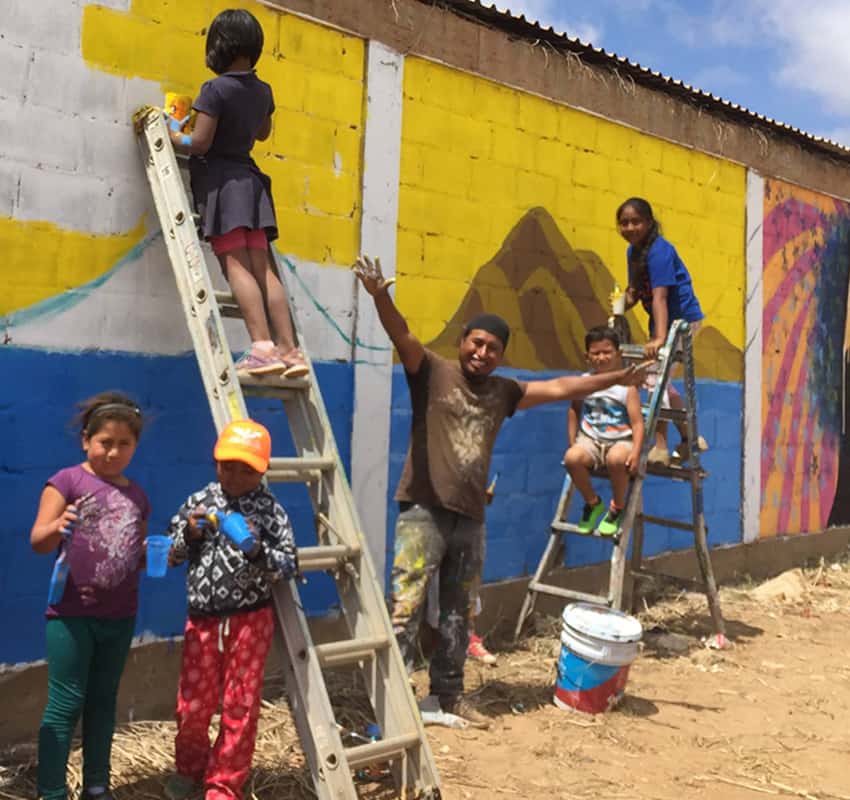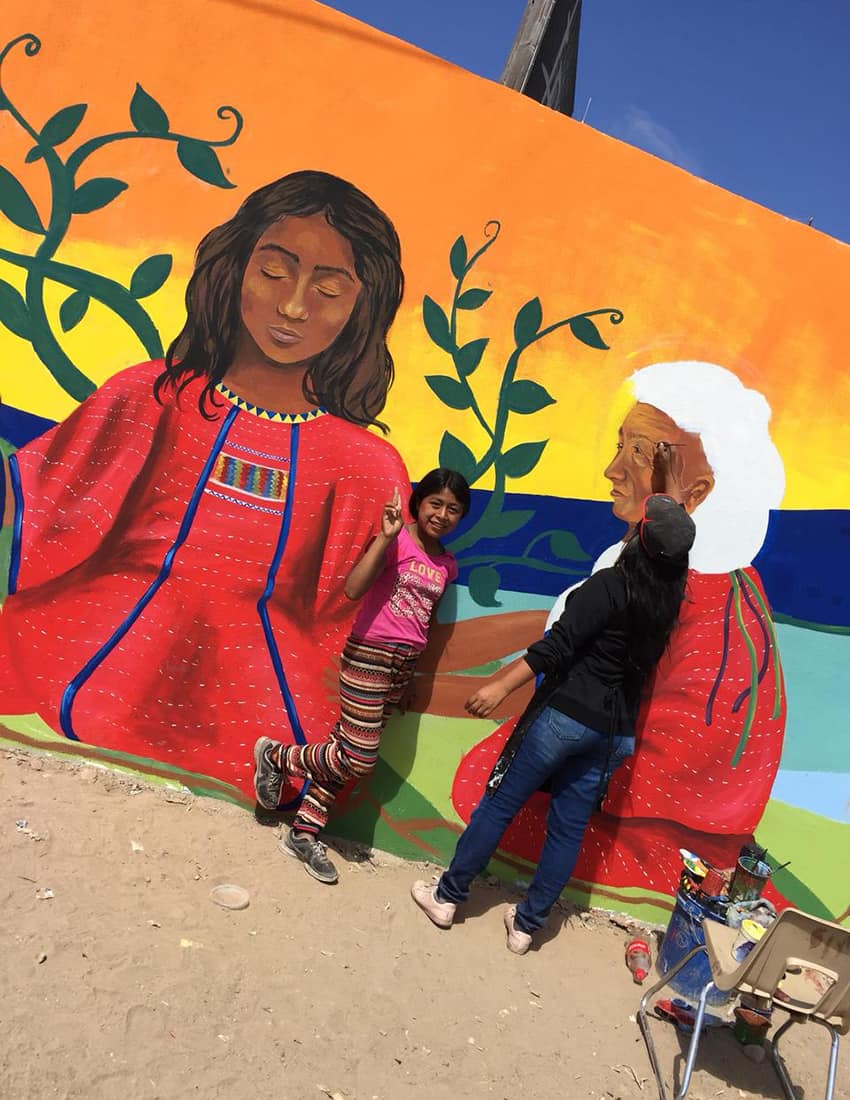It is definitely a case of “great minds think alike.”
Julia Celeste and Rogelio Santos are both artists dedicated to using murals to improve community ties in San Quintín, a poor rural farming valley that is near Ensenada but also a world away from it. Separately, they saw the beauty and problems that surround them and came up with the same idea.
San Quintín is highly representative of the migration north into Baja California, not only by those hoping to get to the United States but by those attracted to Baja’s large industrial farms and border factories.
In San Quintín, farming is king, especially tomatoes, strawberries and, to some extent, seafood.
Large farms need large quantities of manual labor, and as is the case north of the border, these businesses look to impoverished areas to bring in less expensive help.

That help comes from many parts of Mexico but particularly from the indigenous groups from the states of Oaxaca, Guerrero and parts of Puebla.
These migrants are working legally within their own country but still share many of the same problems that those further north face: poverty, discrimination, drugs and violence. But perhaps the most important issue is that of identity. No matter where they were born, in many ways they are neither from Baja nor their states of origin.
San Quintín’s deputy minister of culture, Yohanna Jaramillo, says it is not easy to run cultural programs here as most residents have little free time and are dispersed over a wide area. However, such efforts are considered important — but not to “give” residents culture, since they already bring rich artistic cultures with them, she says. “The programs look to promote and find new ways to express these various heritages.”
Community inspired and executed murals have been on the rise in Mexico. In San Quintín, the overriding focus of this work has been on the migrant experience. Celeste and Santos in particular have been instrumental in such efforts.
Celeste’s family moved to Baja California in the 1960s, when her mother was just 4. Celeste showed a strong interest in art from a very young age but did not take any formal classes until she was 15.
Her lack of a degree did not stop her from starting an art school for children in her family’s garage. Over the years, the classes she taught formed a small artistic community in her part of San Quintín.
She became involved with the municipality’s culture ministry, which added mural work to an existing program, Culturas Comunitarias (Community Cultures), which documents the different ethnicities in the valley.
Through this work, Celeste managed to get two 30-square-meter murals done with government financial support before the pandemic put the program on hiatus.
Santos’ life is representative of the indigenous Mixtec experience in Baja: born in Juxtlahuaca, Oaxaca, he migrated there when he was 5, but he and his family have maintained ties to their hometown.
Like Celeste, Santos’ talent and interest emerged early, with an added plus: he found in art a way to get beyond discriminatory attitudes among other kids at school.
He went on to study art at the University of Baja California in Ensenada, then at the School of Fine Arts in Oaxaca. He believes that both experiences are an important part of who he is.
Santos had a more traditional career trajectory with individual and collective exhibits from 2011–2017, but since then he has become dedicated to community-based art projects both in Baja California and Oaxaca.

The first project, Colores de mi entorno: Muralismo sobre la transculturalidad (Colors of my Environment: Muralism about Transculturalism), took place in 2018. With federal funding, he began with a workshop in muralism and identity, then created murals in various parts of San Quintín. He had to rely on personal connections at first for volunteers to paint with him, but once word went out about the project, more people came.
Santos considers the project a huge success not because it got significant local media coverage but because it involved young people of various ethnicities and even those marginalized because of drug use.
He has since done two other projects called Memoria de mi Valle (Memory of my Valley), and Pintura Experimental con el Centro Cultural de Tijuana (Experimental Painting with the Cultural Center of Tijuana) both in 2019.
Celeste and Santos created their programs separately, but their work shares important elements.
Both focus on themes of migration, farm work, natural beauty and indigenous cultures. Both integrate the faces of real people in the valley — in some cases using murals to honor specific people, such as one indigenous Triqui woman working to preserve her people’s weaving traditions and another who has spent years keeping a local park clean.
Both design their projects to allow maximum participation from the public, relying on brushes and acrylics instead of spray paint. The artists get the sketch on the wall, and volunteers fill in the lines, coloring-book style. In some cases, Santos adds more advanced touches like shadowing.
Santos says the murals are a form of “cultural resistance” that allows migrants to conserve as much of their original heritage as possible. It also works to get youths from different ethnicities working together, “in harmony,” as Celeste puts it. This is important because there are inter-ethnic rivalries that contribute to violence in San Quintín.
Despite his good fortune in getting government funding for his efforts, Santos admits it is not enough, especially in the long run. He is looking to create fundraising campaigns related to his projects that could be sold, such as calendars.
• Julia Celeste can be reached on Facebook at or through Instagram.
• Rogelio Santos can be reached via email or on Facebook or through Instagram.
Leigh Thelmadatter arrived in Mexico 18 years ago and fell in love with the land and the culture in particular its handcrafts and art. She is the author of Mexican Cartonería: Paper, Paste and Fiesta (Schiffer 2019). Her culture column appears regularly on Mexico News Daily.
